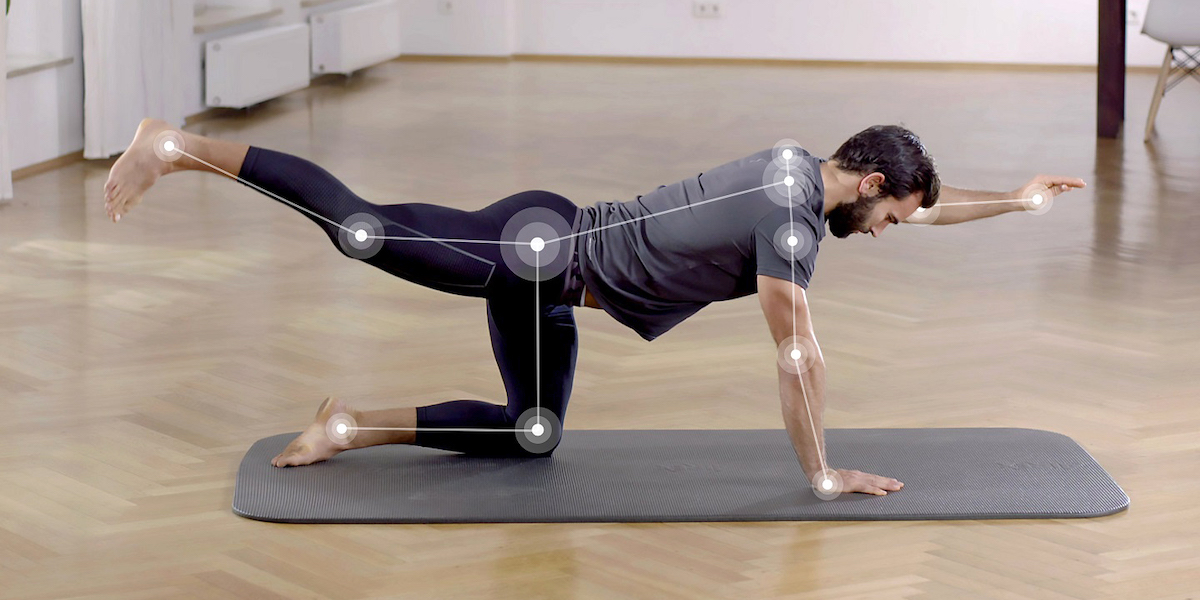Not everyone can afford a full-time personal trainer, so how can you tell if your exercise routine is helping you achieve your fitness goals – or potentially doing more harm than good?
The world’s first full-body virtual personal trainer, Kaia Personal Trainer, can actually tell you when you’re stuffing up an exercise move as you are doing it. And give you instructions on how to fix it. The app is totally free too!
Exercising without instruction can lead to injury, particularly when people fail to identify where to feel the tension in a particular exercise or how to execute it correctly. Compound exercises, where multiple muscle groups work simultaneously, are the ones people commonly get wrong. These include the squat, lunge and burpee.
Developed with physiotherapists and fitness experts, Kaia Personal Trainer is the first fitness smartphone app to use patent pending AI-powered motion tracking technology. The app tracks physical activity with a 16-point system that compares the metrics of actual movement against ideal movement, including the relative positions of limbs and joints – and the angles between them.
The Kaia Personal Trainer counts the number of reps and provides real-time audio feedback to ensure exercises are done correctly. That’s pretty damn cool guys. We don’t even feel that we get enough help like this during group fitness classes. In light of this, the team behind the app have given us a list of the workouts most people tend to get wrong – offering up some simple advice on how to get it right.

Squats
When done correctly, squats exercise multiple muscle groups and improve core position and posture. The most common mistake is leaning too much to the front or extending the knees instead of ‘sitting back’ while lowering the body. This not only reduces strength and muscle gain but increases injury risk.
How to do a squat correctly
Stand with your feet slightly wider than your hips and keep your spine in neutral as you put your arms straight out. Feel the weight in the heels and balls of your feel and tense your core. Breathe deeply, bend at your hip and lower your body as you push your butt back. Keep your knees in line with your feet and ensure they do not move inwards. Lower your body until your hip joint is lower than your knees. Breathe out, still tensing your body, and raise your body through your heels.
Lunges
When done correctly, lunges help to strengthen, sculpt and build muscle groups such as the thighs, buttocks or hamstrings. A common mistake of the lunge is when people do not keep their upper body straight during the movement, or they perform the movement too fast. To avoid pain in the knees, take smaller steps when you lunge initially, then gradually increase the range of motion.
How to do lunges correctly
Start in a kneeling position and then lunge forward with one leg. Shift your weight to the front leg and bring your other knee up off the ground while keeping your upper body straight and tensing your core. Keep your front knee over your ankle, not pushed out too far as you slowly lower your knee to the ground. Always return to the starting position and repeat the movement.

Glute Bridge
This is a great exercise for activating the posterior chain, especially the glutes. To get the full contraction of the glutes, the hips must be completely extended. A lot of people start to lower the hips a few inches before that extension. The Kaia Health Personal Trainer forces you to fully extend the hips. It also corrects you, if you lift your head from the ground, to watch the movement. To keep your neck healthy, it should rest on the ground, constantly.
How to do the glute bridge correctly
Lie flat on your back and raise up your legs so that your feet are together and flat on the ground. Pull your toes up so that only your heels are touching the floor and lift your buttocks off the ground. Raise it so far that your shoulders, buttocks, and knees create a straight line. Lay your upper body, one vertebra at a time, slowly onto the ground and repeat the exercise.
Plank
Most people probably know the correct position of this exercise but how do they know they’re executing it correctly? In order to keep your cervical spine aligned with your upper body and legs, it forces you to look downwards. By eliminating the guesswork, you can now fully concentrate on the tension in your core.
How to do a plank correctly
This one is simple. Support your body on your forearms and toes. Tighten your abs by pulling your belly button slightly inward. And hold this position for as long as you can.







